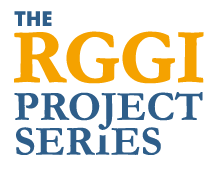Regional Carbon Market Generates Economic Growth in 10 States
Boston, MA, November 15, 2011 — In three years, the Regional Greenhouse Gas Initiative (RGGI) added economic value worth more than $1.6 billion (or nearly $33 per person) to the 10 member states1 , according to a first-of-its-kind report released today at the National Association of Regulatory Utility Commissioners (NARUC) conference by the independent economic consulting firm Analysis Group.
According to the report, “The Economic Impacts of the Regional Greenhouse Gas Initiative on Ten Northeast and Mid-Atlantic States,” RGGI investments to date will end up delivering the following results:
- The regional economy gains more than $1.6 billion in economic value added (reflecting the difference between total revenues in the overall economy, less the cost to produce goods and services)
- Customers save nearly $1.1 billion on electricity bills, and an additional $174 million on natural gas and heating oil bills, for a total of $1.3 billion in savings over the next decade through installation of energy efficiency measures using funding from RGGI auction proceeds to date
- 16,000 jobs are created region wide
- Reduced demand for fossil fuels keeps more than $765 million in the local economy
- Power plant owners experience $1.6 billion in lower revenue over time, although overall had higher revenues than costs as a result of RGGI during the 2009-2011 period
RGGI requires major power producers to buy allowances at auction for each ton of carbon dioxide (CO2 ) they emit. Power plant owners have spent roughly $912 million from mid-2008 through September 2011 to buy allowances from states. The report released today is the first to track these expenditures by power plant owners in auctions to buy CO2 allowances, the impacts on electricity prices paid by consumers, and the auction proceeds disbursed to the states and subsequently spent on different projects. Results from the study are expected to be published in the December edition of The Electricity Journal, a leading policy journal for the U.S. electric power industry.
“As the first U.S. experiment with a carbon price in electricity markets, RGGI now has produced actual historical data that reveal the concrete economic impacts at the state and regional level,” said Dr. Susan Tierney, one of the lead authors of the report and a managing principal of Analysis Group. “We tracked the dollars spent, and RGGI generates greater economic growth in every one of the 10 states that participate in RGGI than would occur without a carbon price. The states’ auction of the CO2 allowances was important for generating those public benefits.”
The report identifies that spending on energy efficiency programs was the most popular way states spent RGGI funds, and the most economically advantageous. Funds were also invested in other ways, all with positive economic outcomes, including worker training, community-based renewable energy projects, bill-payment assistance to low-income and other energy customers, land protection, and contributions to a state’s general fund to help close budget gaps.
Regional Carbon Market Generates Economic Growth in 10 States
“Although RGGI represents a well-functioning multi-state agreement, RGGI is fundamentally rooted in states’ rights. Each state spent the money raised through the regional carbon market according to its own individual priorities,” commented report co-author Paul Hibbard, a vice president with Analysis Group. “Regardless of what they invested in, each state benefitted from capturing the value of the RGGI allowances for public benefit, re-investing the auction proceeds back into the local economy, and reducing fossil fuel demand. By and large, these dollars remained inside their local economies. And, those states that made energy efficiency a priority reaped even greater economic benefits.”
In a meeting yesterday, Analysis Group briefed state officials on the study results. The 10 RGGI states reside in one of three “electrical regions,” each with a different mix of electricity generating sources. Each region’s relative reliance on fossil fuels affected the level of economic benefits, as did the states’ different choices about how and when they chose to invest their auction proceeds.
The performance of this regional market is important given the RGGI states’ large population (1/6 of the U.S.) and economic clout (1/5 of U.S. GDP), according to the report. As a result of the relative efficiency and low emissions of the region’s electricity mix, the 10 states in RGGI use only 11 percent of the country’s power generation and produce 6 percent of all U.S. carbon emissions.
Methodology
To conduct this report, Analysis Group authors used publicly available information, along with state data reports and interviews with state agency personnel. Tracking actual dollars collected and spent to date, the authors analyzed the economic impacts both inside the electric sector as well as on the economy as a whole. The results represent economic impacts over the next decade from the first three years of RGGI dollars being collected and reinvested back into the economy. This analysis compared the outcomes in the region’s electric system “with RGGI” to outcomes in the same power system but with RGGI impacts removed. The authors also analyzed employment and economic value added to each state and to the regional economy, as well as purchases of fossil fuels from outside the region.
About Analysis Group
Analysis Group provides economic, financial, and business strategy consulting to leading law firms, corporations, and government agencies. The firm has more than 500 professionals, with offices in Boston, Chicago, Dallas, Denver, Los Angeles, Menlo Park, New York, San Francisco, Washington, D.C., and Montreal.
